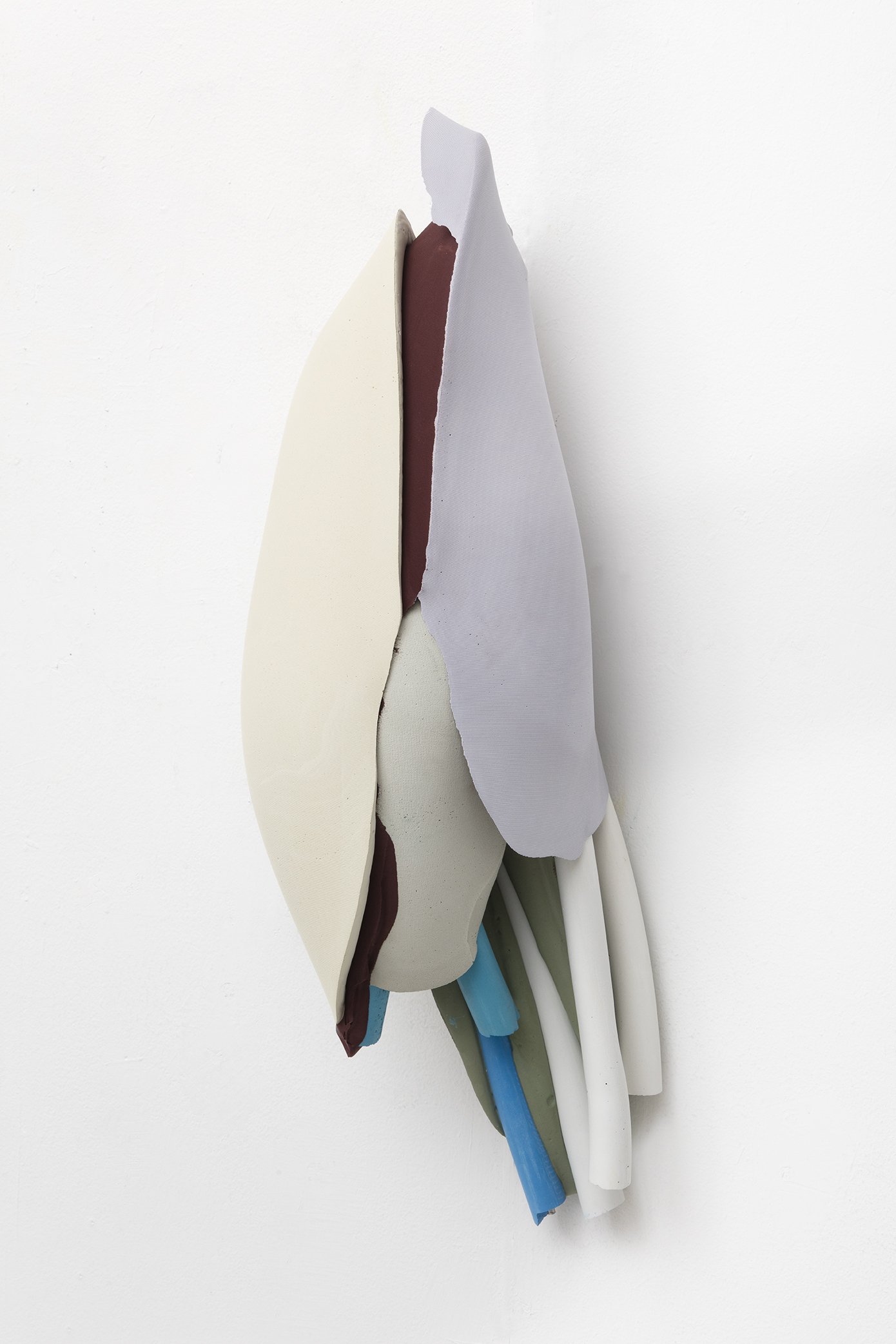 Vuhaa, 2017-18, 64 x 24 x 19 cm
Vuhaa, 2017-18, 64 x 24 x 19 cm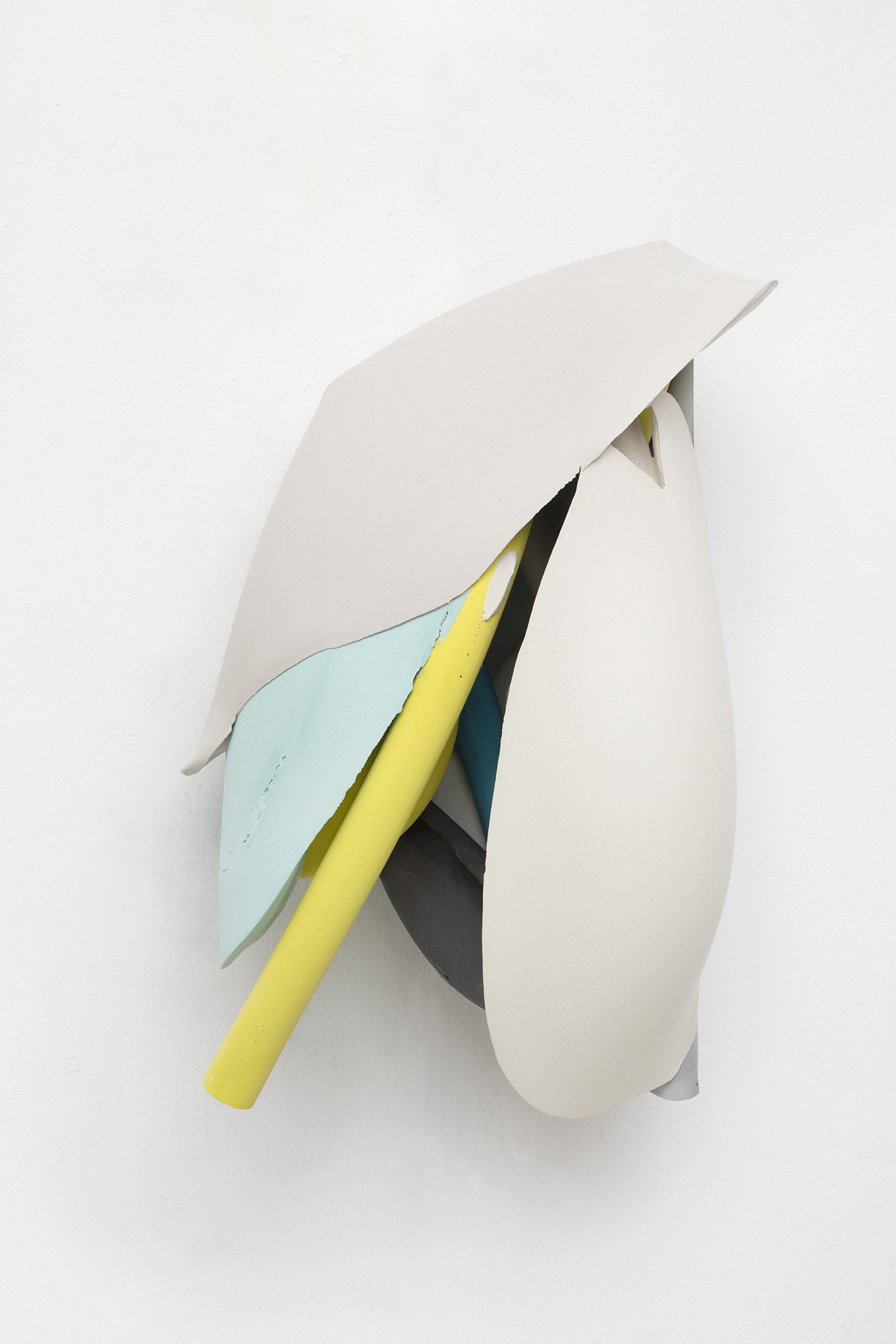 Tsheas, 2016-18, 49 x 26 x 23 cm
Tsheas, 2016-18, 49 x 26 x 23 cm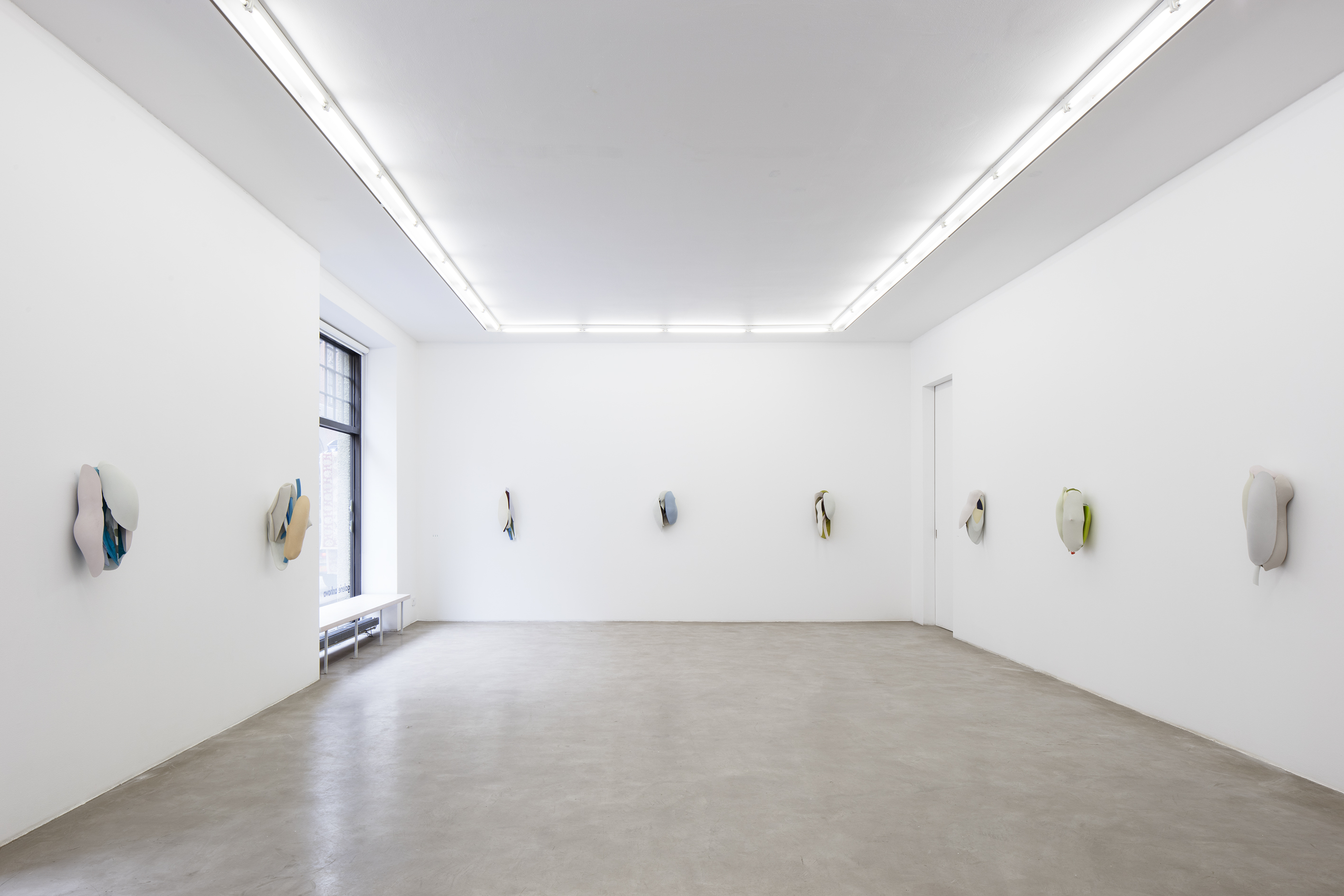
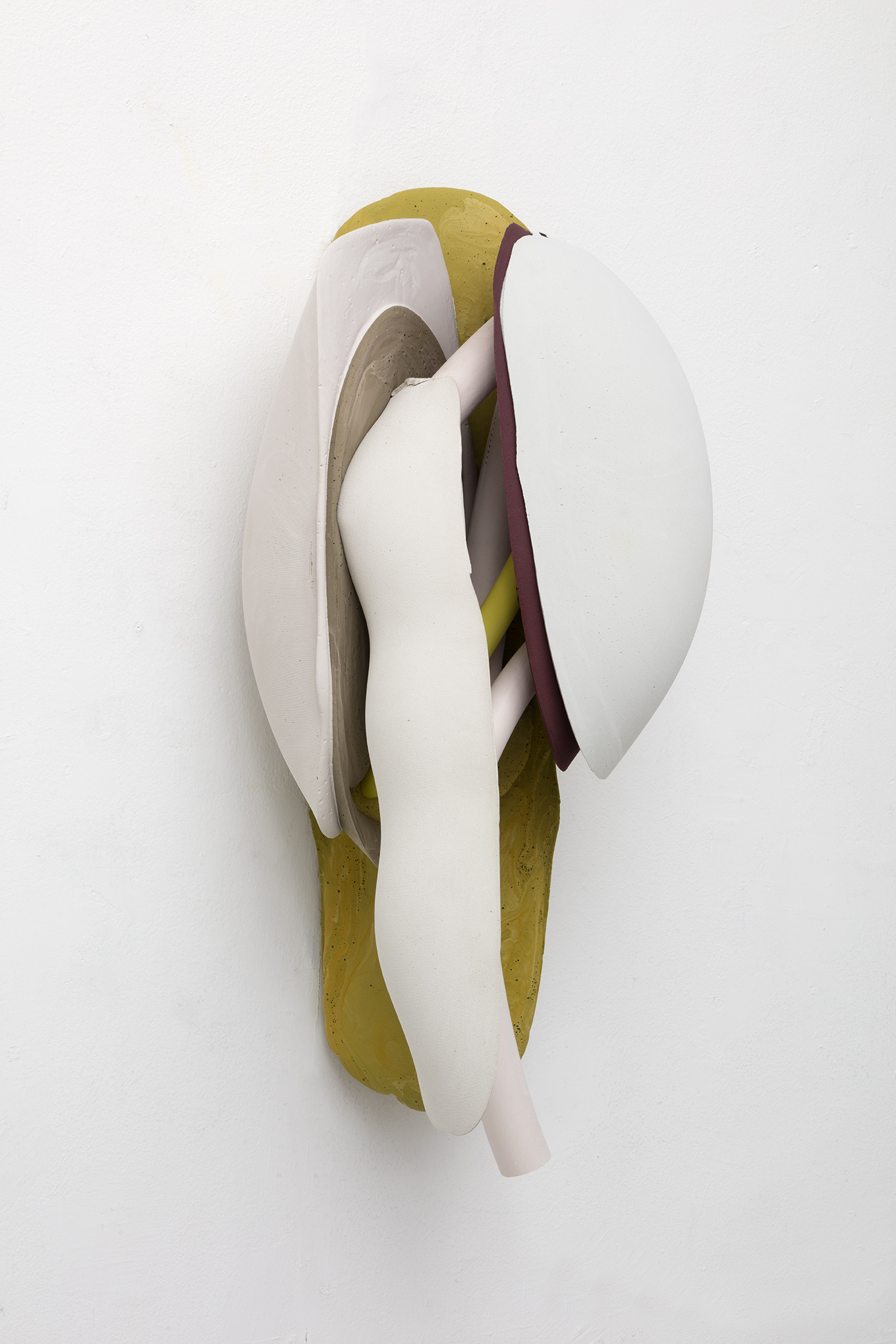 Wusta, 2017-18, 52 x 29 x 25 cm
Wusta, 2017-18, 52 x 29 x 25 cm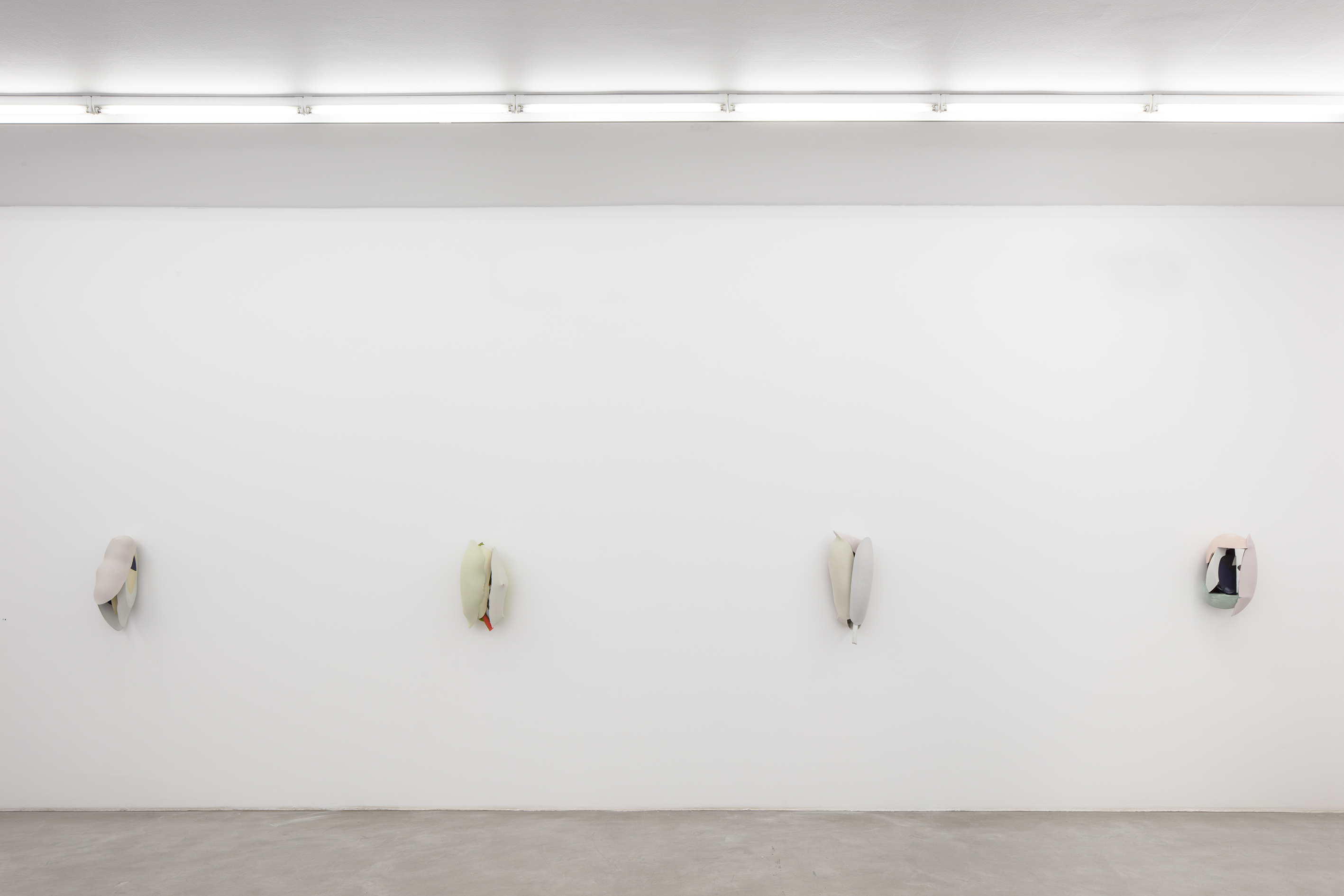
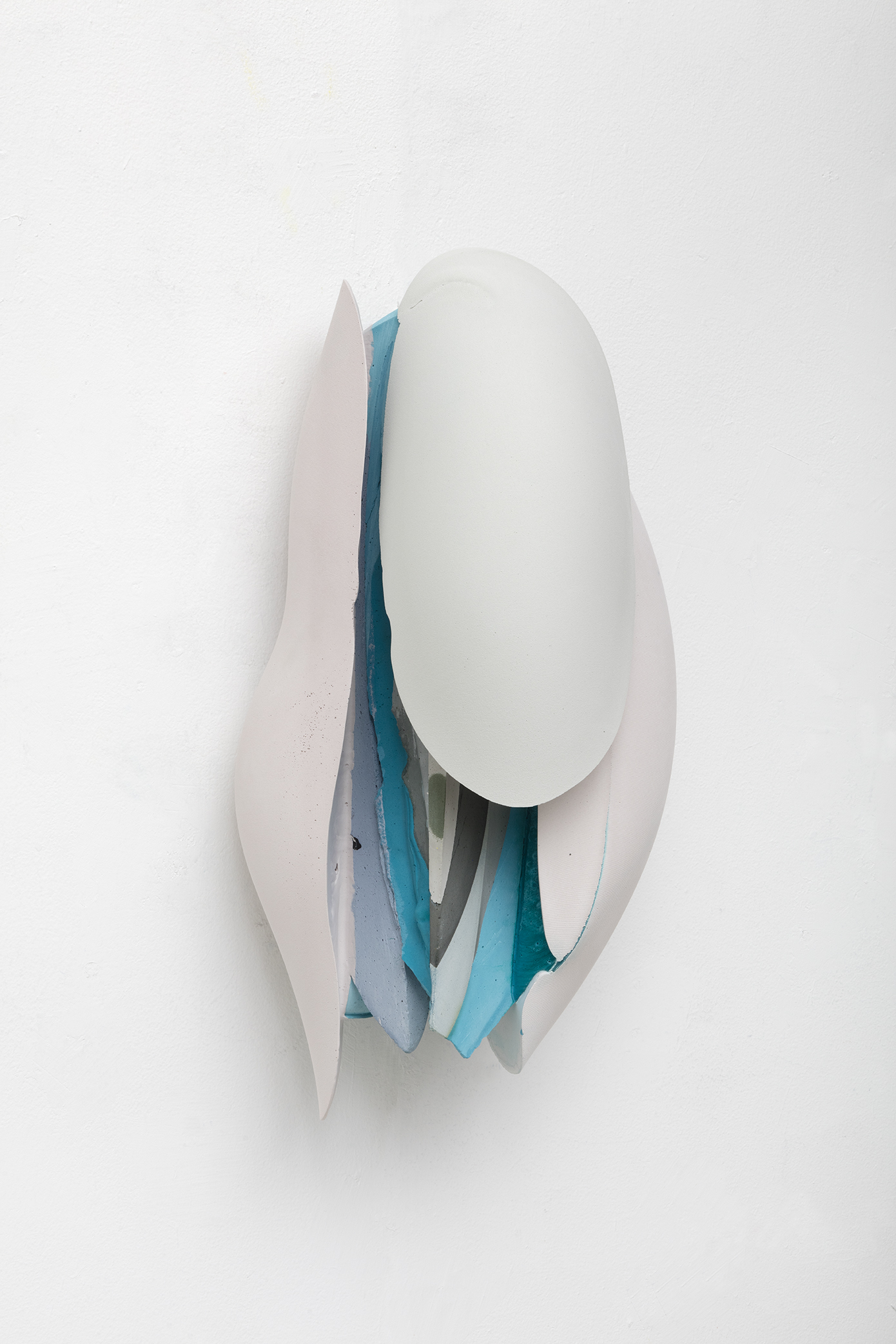 Tahab, 2017-18, 48 x 26 x 23 cm
Tahab, 2017-18, 48 x 26 x 23 cm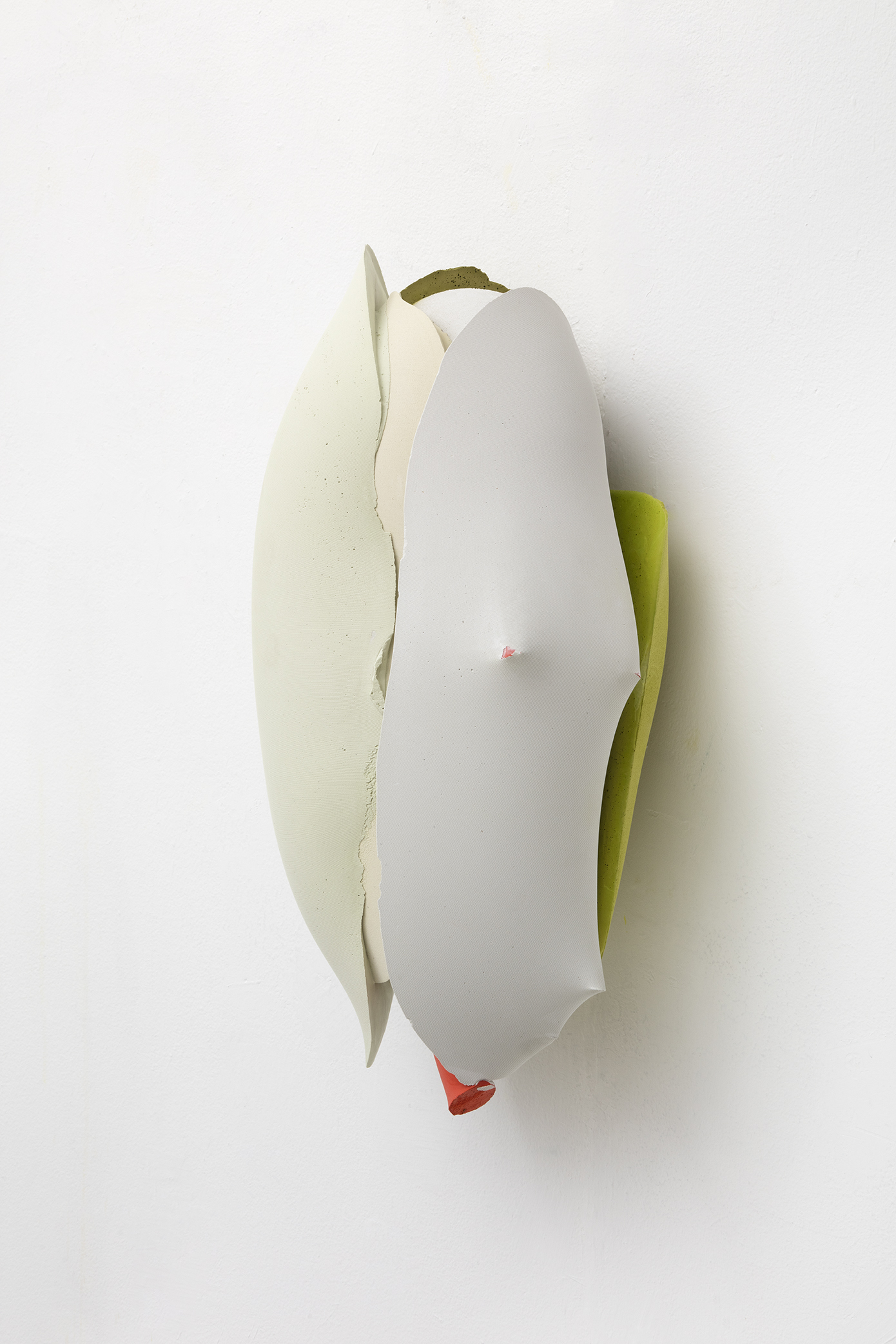 Keestes, 2005-18, 53 x 25 x 29
Keestes, 2005-18, 53 x 25 x 29
In this exhibition you have works of dyed plaster on show. Could they be called sculptures or paintings, or how would you refer to them?The frame of reference of my work is often in the area of painting, even when the piece itself may be three-dimensional or employs the moving image. I like to speak of cast pieces. This term refers to the process of making the work. In Finnish it is valos, which includes the word valo, meaning light, which is immaterial and related more to the world of colour. I regard these works, perhaps in a utopian sense, as objects of an interstice, something of their own. Neither sculptures nor paintings but something else. You displayed the first works of this kind in 2000 at Galleria Titanik in Turku, where you made them on-site, as also at the Pori Art Museum in 2006. In these works, performativity and temporariness appeared as the main aspects. In the present exhibition, you display the works as independent objects, but the process is still present. You cut, saw and recast your cast pieces and continue them to make new works. This exhibition contains parts of works from as early as 2005.I think of this in terms of an artwork containing the opportunity to be continued. Its form may yet change. A given display situation shows the piece as completed, but it could have been different. I do not consider casts to be permanent forms in a chronological sense.My work involves setting out a network. A piece may live on or be reassembled into several new works. The works refer to each other through their shared history. Considered in these terms, these seemingly non-figurative pieces become highly narrative. Time is evident in their overlapping casts of plaster and marks of sawing, and in their layers of colours. Do you consider your works to be abstract or do they relate to examples of some kind? I’m fascinated by the original meaning of the word ‘abstract’ implying withdrawal. With these and other works, I try to withdraw from interpretations and their direct verbalisation. I don’t believe it is possible to make a completely abstract work of art. Abstract art has become a language that largely functions by way of reference and hardly differs from figurative art. The cast pieces are solids in space, something highly concrete. While they bear images of only their own process of being made, they also contain other marks and references through which the narrative is constructed. The shape of the mould and the structure of the fabric on the surface of the works already constitute an image. You spoke of the problem of verbalisation and the relationship of abstraction with text. Yet you give titles to your works, and at least to me the titles do not actually say anything. The titles individualise the works in the manner of proper names. I have regarded them as voiced sounds rather than meanings. Depending on their own linguistic background, viewers will read the titles in their own ways. There are no instructions for pronunciation. The titles are also passed on from one work to another. If an artwork is broken down into pieces after an exhibition to make new works, the descendants will be given the same syllables or letters in their names. The process also continues in this area. This brings to mind descent and genotype. Your artworks pass on their properties to the works that follow them, thus transmitting their genes to following generations. This is an interesting idea in terms of genetics and biology, to which the organic forms of the works also refer. I think of my works as highly corporeal. They evolve and change, gathering information and acts into themselves. They are like pieces of memory, acting like our bodies and changing as they grow older. Organic form points to growth and change. In three-dimensional form, it also forces the viewer to move and walk around the piece.I cast the works into resilient fabric and I cannot control the results completely. I cannot repeat the same form twice. Each casting is a highly individual event. I also like the fact that organic form is not generic but individual, a unique phenomenon that does not follow examples.
